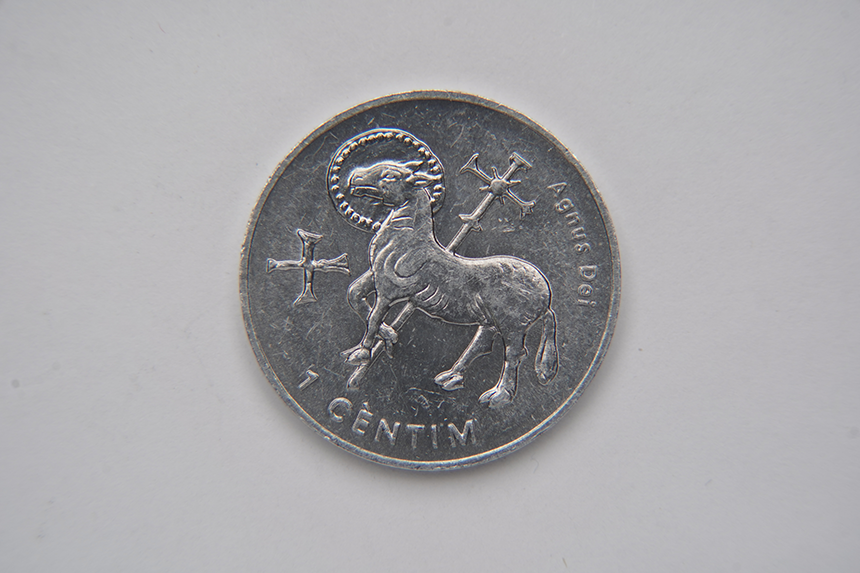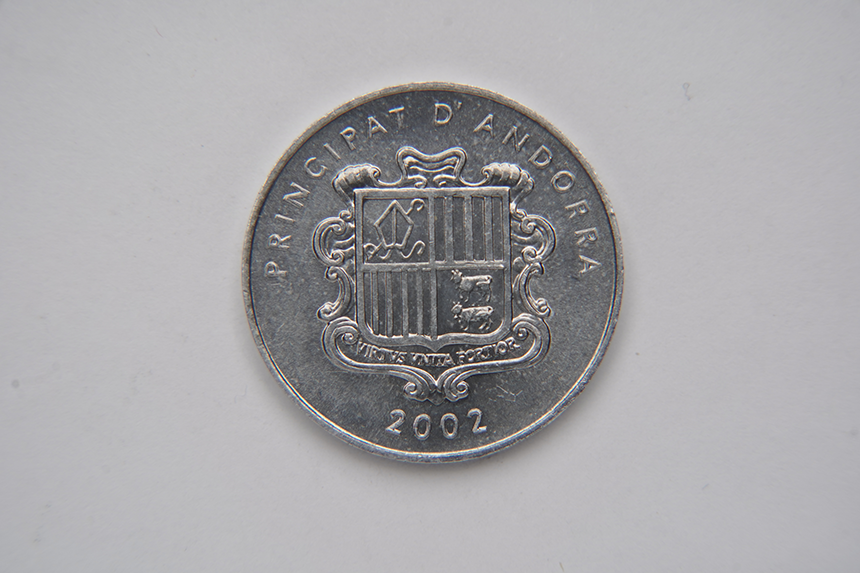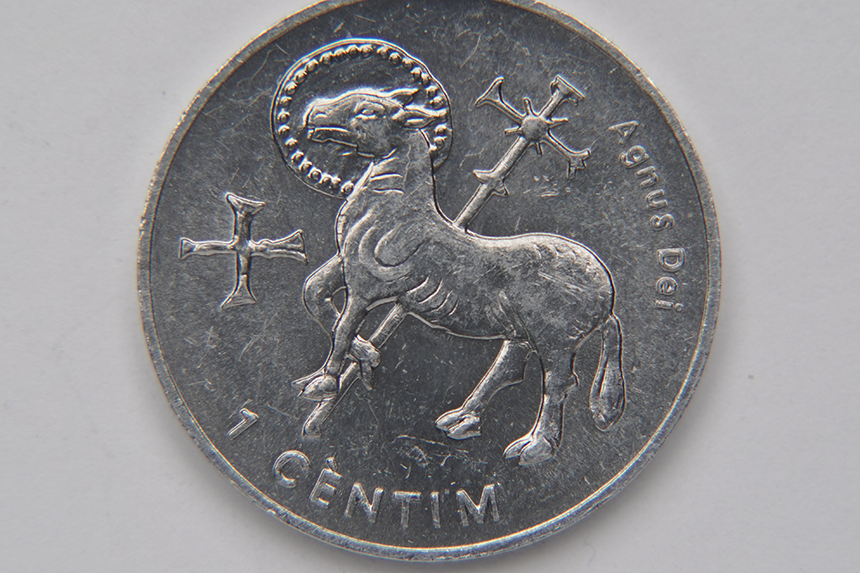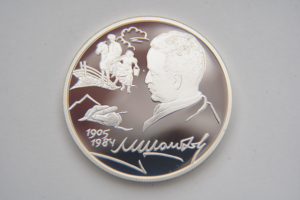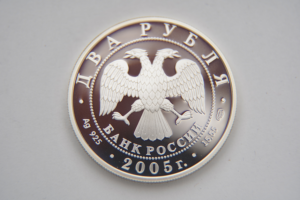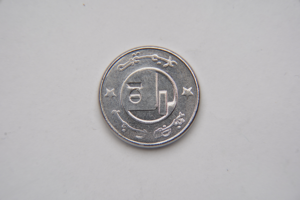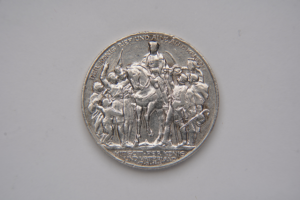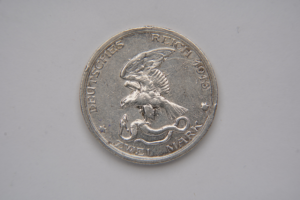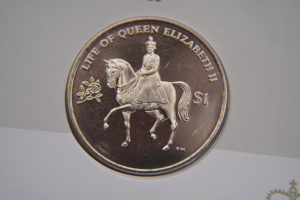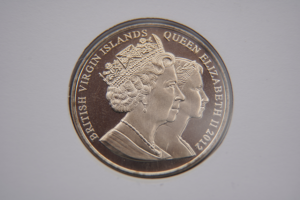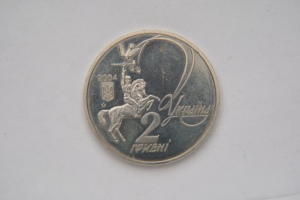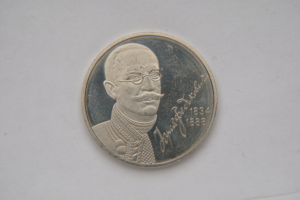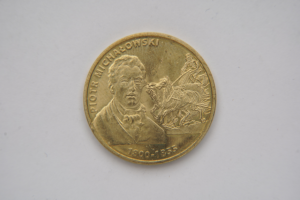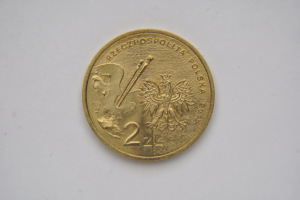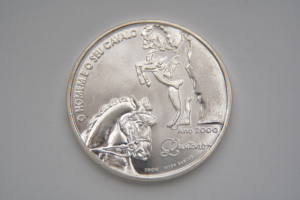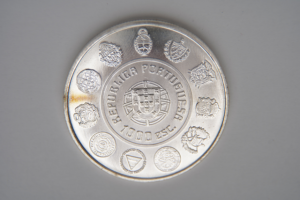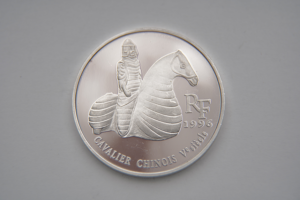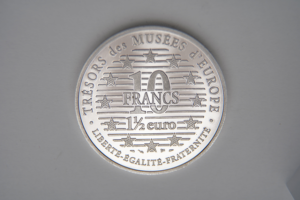Agnus Dei in Christian art.
Obverse of the coin.
Big size of reverse of the coin.
More information
Agnus Dei in Christian art.
So here we have the Andorran centime, nominal - 1. The year of issue of this coin is 2002, mint: Kremnica, Slovakia.
Agnus Dei is a visual representation of Jesus as a lamb, since the Middle Ages, usually carrying a halo and holding a standard or banner with a cross and symbolizing the victory. This normally rests on the lamb's shoulder and is held in its right foreleg.
Often the cross will have a white banner suspended from it charged with a red cross (similar to St George's Cross), though the cross may also be rendered in different colors. Sometimes the lamb is shown lying atop a book with seven seals hanging from it. This is a reference to the imagery in the Book of Revelation 5:1–13, ff. Occasionally, the lamb may be depicted bleeding from the area of the heart (Cf. Revelation 5:6), symbolizing Jesus' shedding of his blood to take away the sins of the world (Cf. John 1:29, 1:36).
In Early Christian art the symbol appears very early on. Several mosaics in churches include it, some showing a row of twelve sheep representing the apostles flanking the central Agnus Dei, as in Santi Cosma e Damiano, Rome (526–30). Agnus Dei is standing on a hill with four rivers of Paradise flowing out underneath.
Founder
Kremnica, Slovakia.
Date
2002.
Culture
Andorra.
Medium
Aluminum.
Dimensions
2.14x27x1.8.
Classification
Coin.

